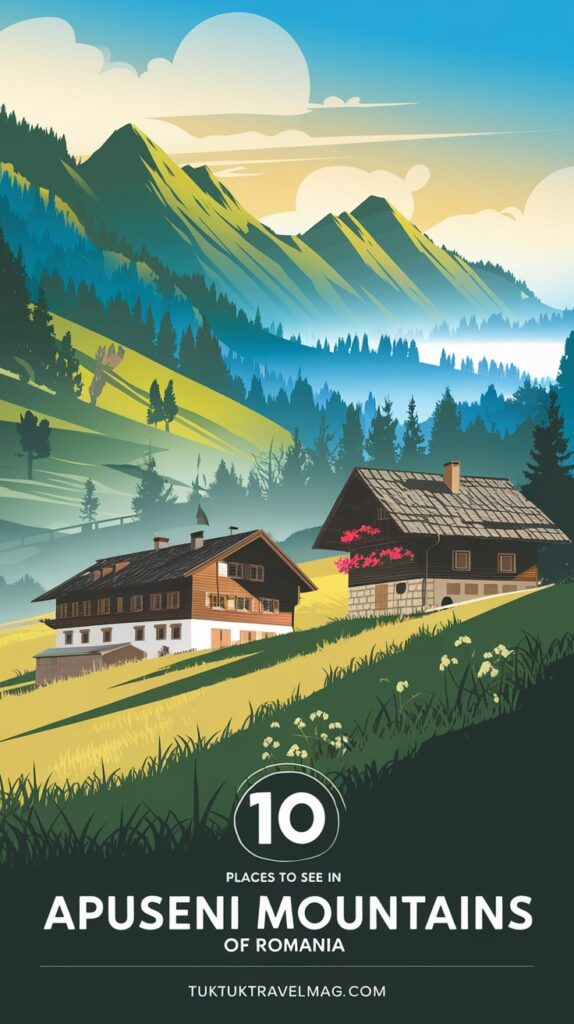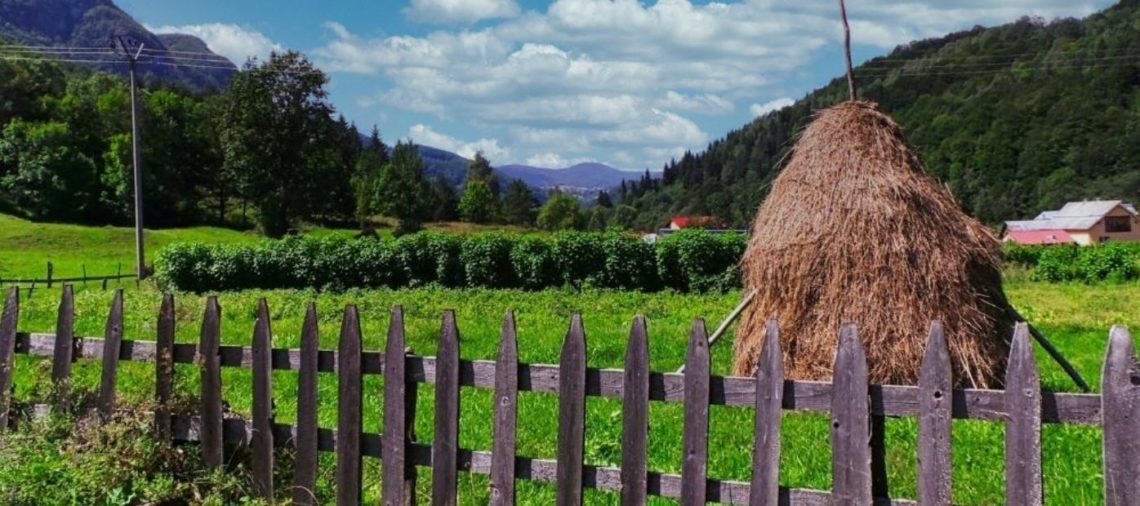The Apuseni Mountains, part of Carpathians, are one of the most attractive tourist destinations in Romania. The enchanting landscapes, the local people, and the general charm of this natural reserve attract thousands of visitors like a magnet. Caves (about 400), waterfalls, easy and difficult tourist trails, interesting fairs and traditions, memorial houses and museums – there are plenty of reasons to visit this region, whatever the season.
I’ve been in the Apuseni Mountains for a few days and, without claiming to have seen everything, I selected ten places you shouldn’t miss. Besides these, there are many more, but only an extended stay could cover them all. Until then… here’s what caught my attention, after I set the “base” in the village of Arieseni. So here are 10 places to see in the Apuseni Mountains of Romania:
10. Pisoaia Waterfall
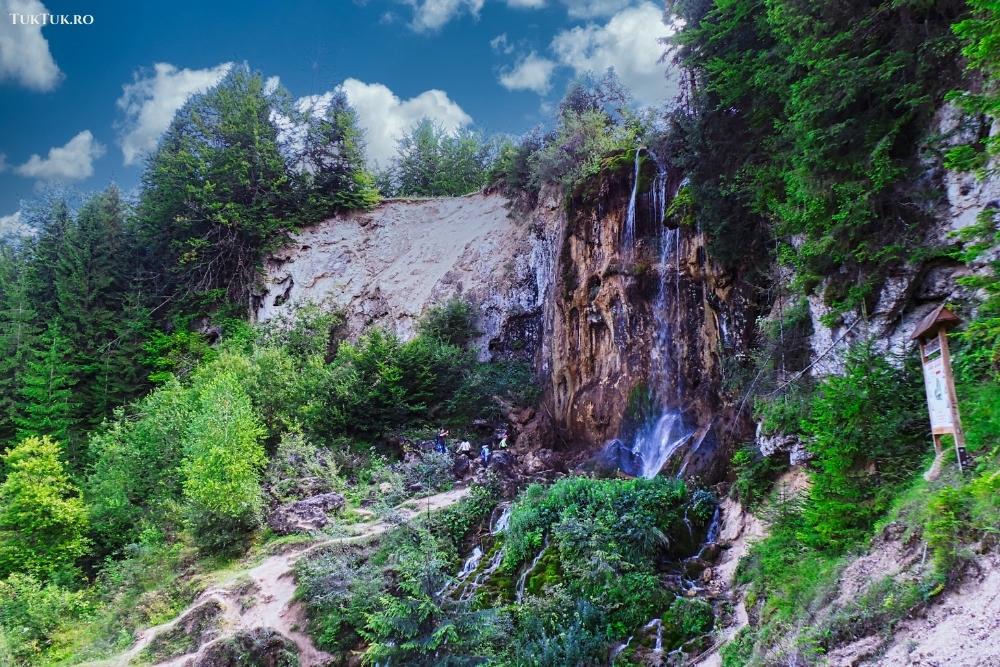
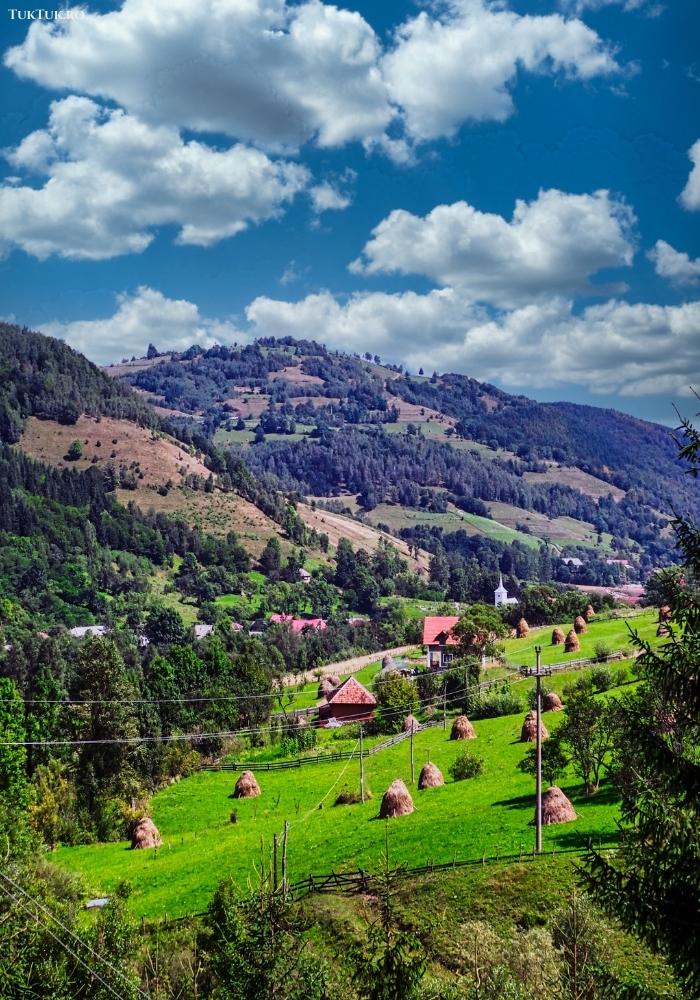
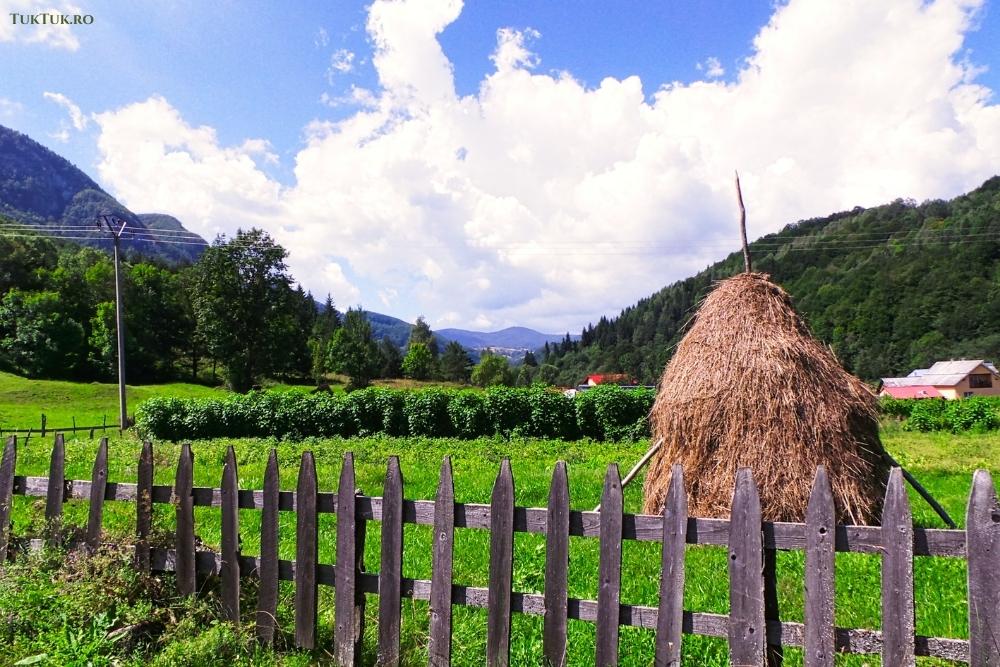
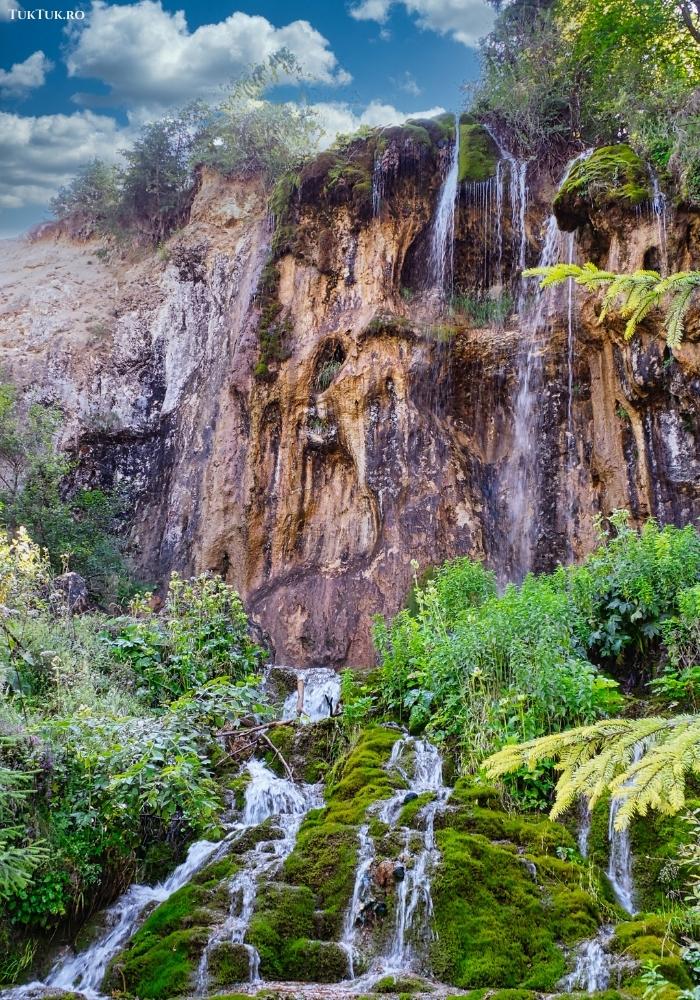

Pisoaia Waterfall, a charming water drop of about 18 meters high, is located in a beautiful natural environment in Vidra commune (Nemesti village). The beech forest surrounding the waterfall helps draw an impressive picture, along with the steep cliffs that drop the water in an unfurling way. A few steps from the waterfall, there is a family business cottage where you can ask the three cute sisters for some delicious pies in traditional motz style.
9. The Hill with Snails
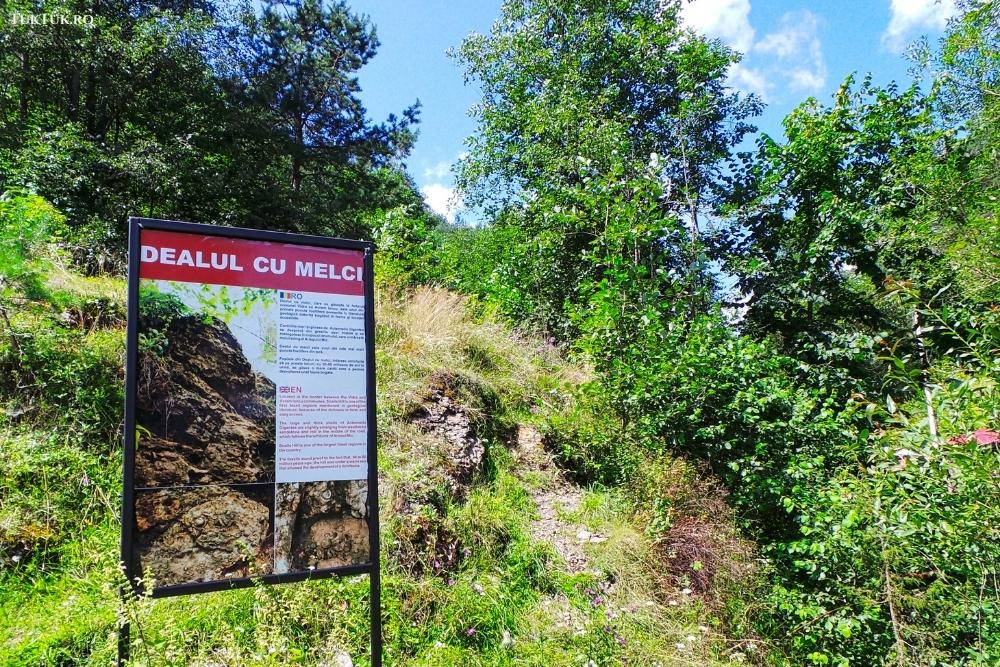

The Hill with Snails, located in the same area, is a more spectacular sight for geologists. It is a rocky formation where you can find the shells of snails that lived here millions of years ago when on the Apuseni Mountains place was a warm sea, which allowed a rich fauna to develop. Snail shapes can easily be seen, being cemented into the rock. The Hill with Snails is one of the first fossil sites mentioned in geological literature and one of the most significant fossil sites in the country.
How to get to Pisoaia Waterfall and the Hill with Snails: From the DN75, which connects Arieseni and Campeni, in the direction of Arieseni, turn left, towards the Avram Iancu commune. At a certain point, you will see a sign with the waterfall. Leave the car on the side road and walk about 500 meters, an easy trail that leads to the waterfall. Dealul cu Melci (The Hill with Snails) is on the county road, just opposite the road to Pisoaia starts, and is marked with a sign.
8. Avram Iancu Memorial House
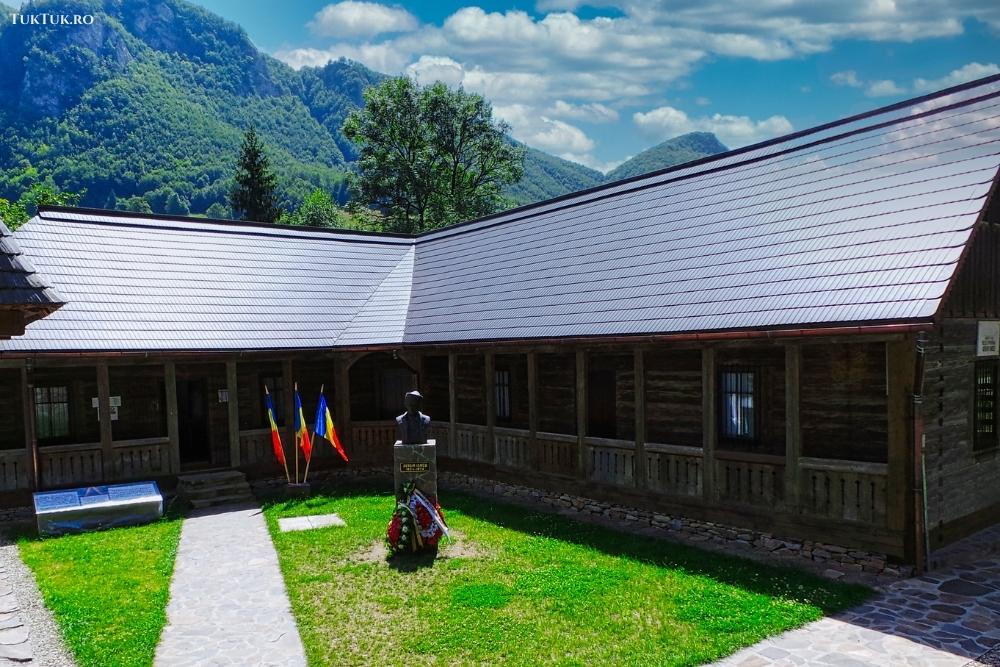
Avram Iancu was a revolutionary of the 1848 movement and leader of the Motzilor Country (a so-called region in Romania) in the fight against the Hungarian troops in 1849. We also know from the history book that Avram Iancu, nicknamed the Prince of the Mountains (Craisorul Muntilor), was born in the Apuseni Mountains in a family of educated local peasants. He had a good education, completed with the graduation of the Law Faculty in Cluj. You can learn more about Avram Iancu’s life by visiting the beautiful memorial house in the village of Incesti. The house has been rehabilitated, following works that lasted three years and that “ate” almost 5 million lei.
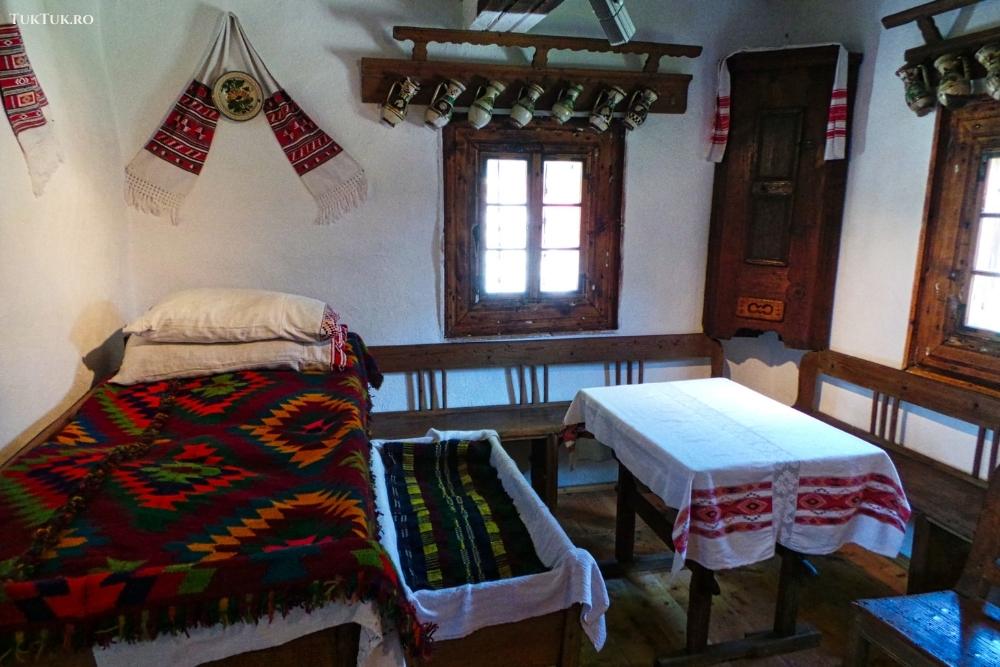
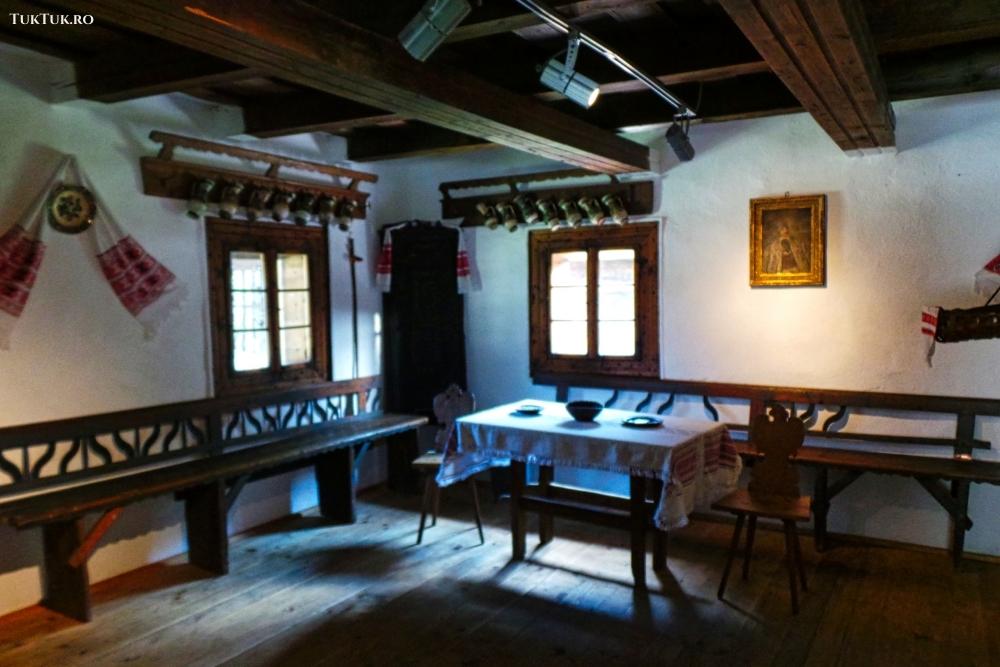
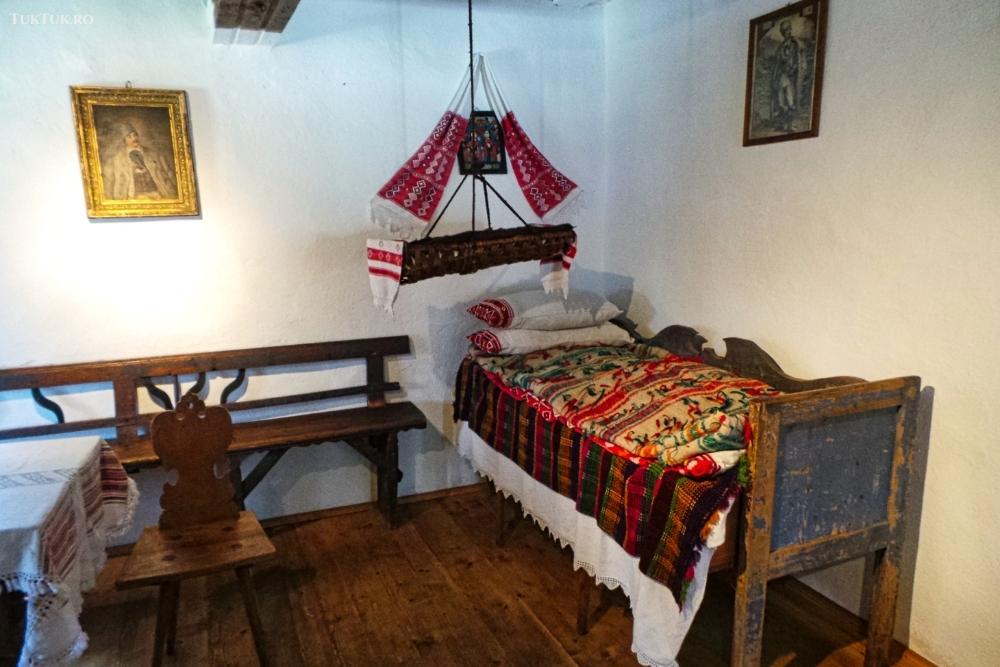
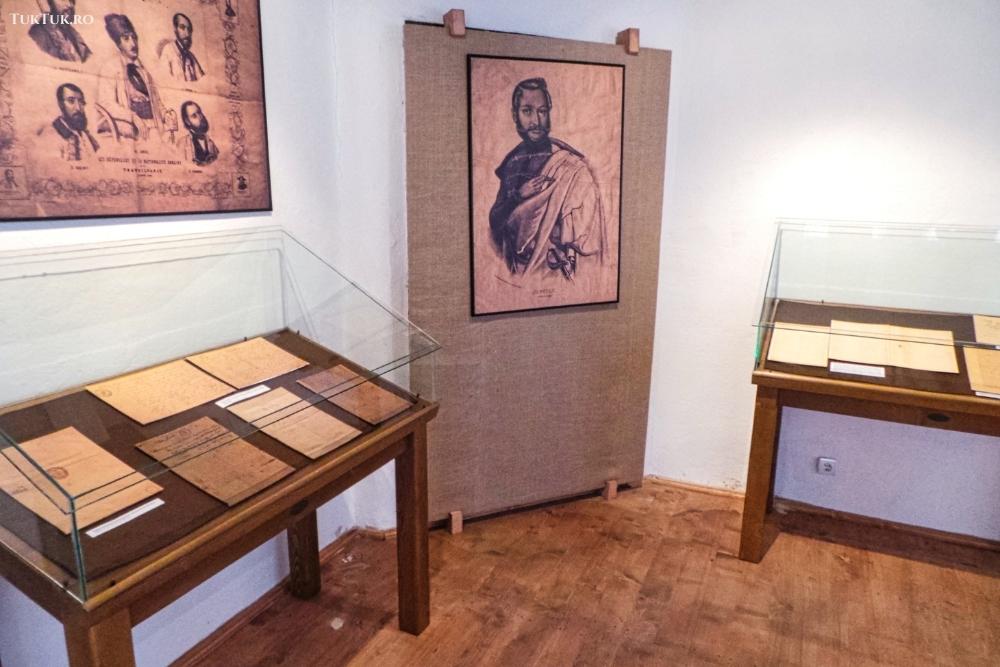
Typically from the Apuseni region, the house itself was built by Avram Iancu’s parents in 1801. Inside, you will discover a lot of documents, photos, certificates, books, newspapers, even personal objects that belonged to the Romanian revolutionary, including his will. Along with these, you can also visit an ethnographic exhibition that includes various local-specific objects (coats, clubs, forks, carts, etc.) and things of the “motz” culture. A small classroom, a small church, and the Avram Iancu’s bust statue, located in the house’s courtyard, complete the visit for which you will pay 5 lei / adult ticket. The memorial house is open from Tuesday to Sunday, between 10 am and 6 pm.
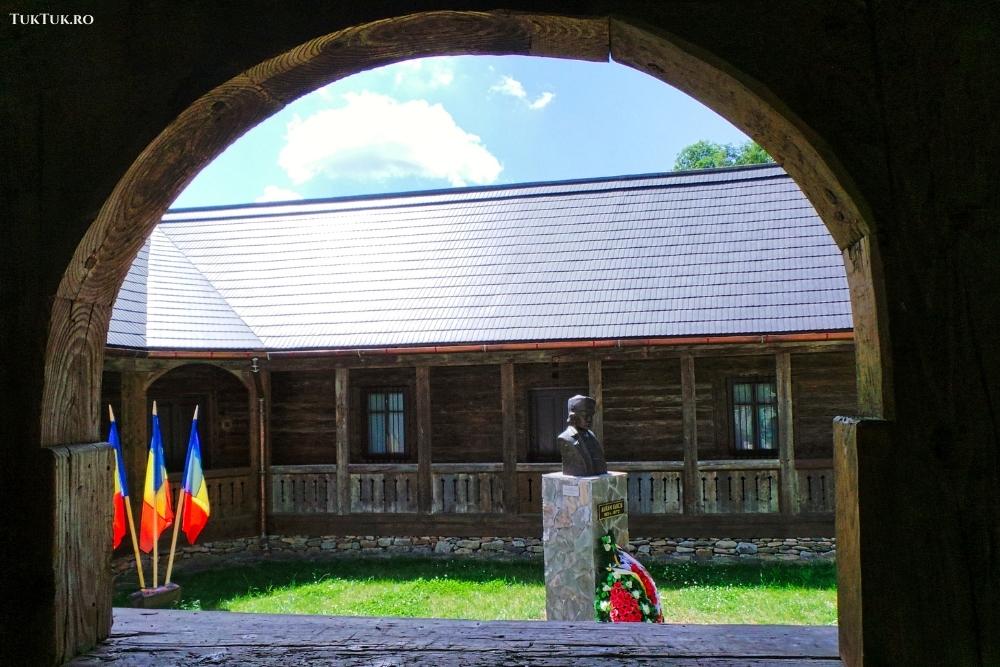
How to get to the Avram Iancu Memorial House: the house is in the village of Incesti, at the entrance of Avram Iancu commune, which you reach from DN75, following the sign.
7. Varciorog Waterfall
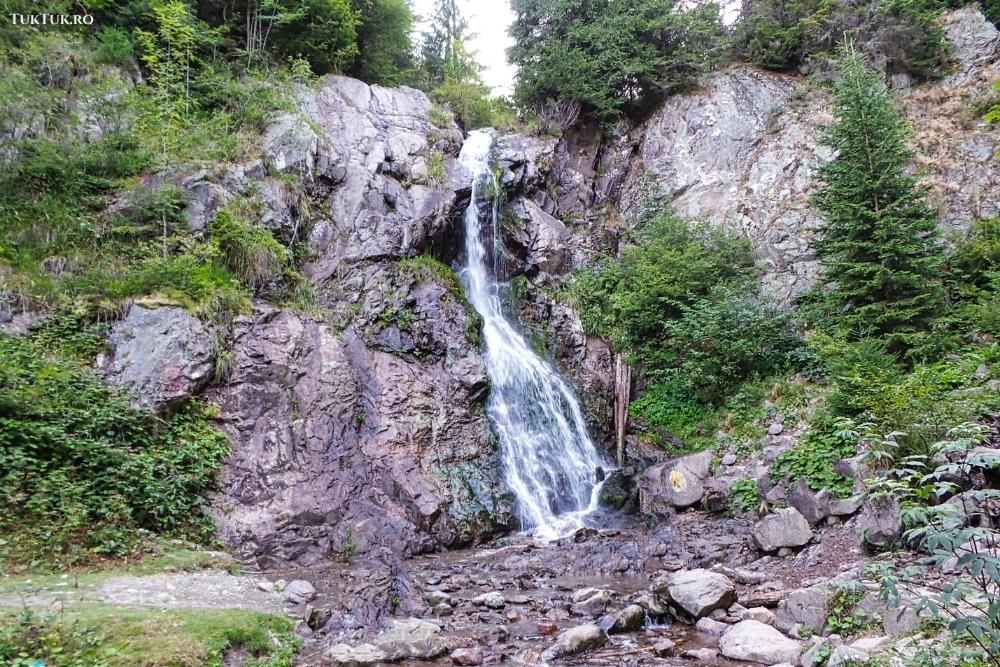
At the foot of the Piatra Graitoare peak (the name comes from the echo in the area) is the Varciorog waterfall, a 15-meter high waterfall, not necessarily very spectacular but beautiful enough to be declared a landscape reserve.
How to get to Varciorog waterfall: from Arieseni, on the DN75, there is a signpost to Vartop and the waterfall about 4 km away on a forest road whose last part requires a steep climb through boulders.
6. Ionele’s Gate Cave
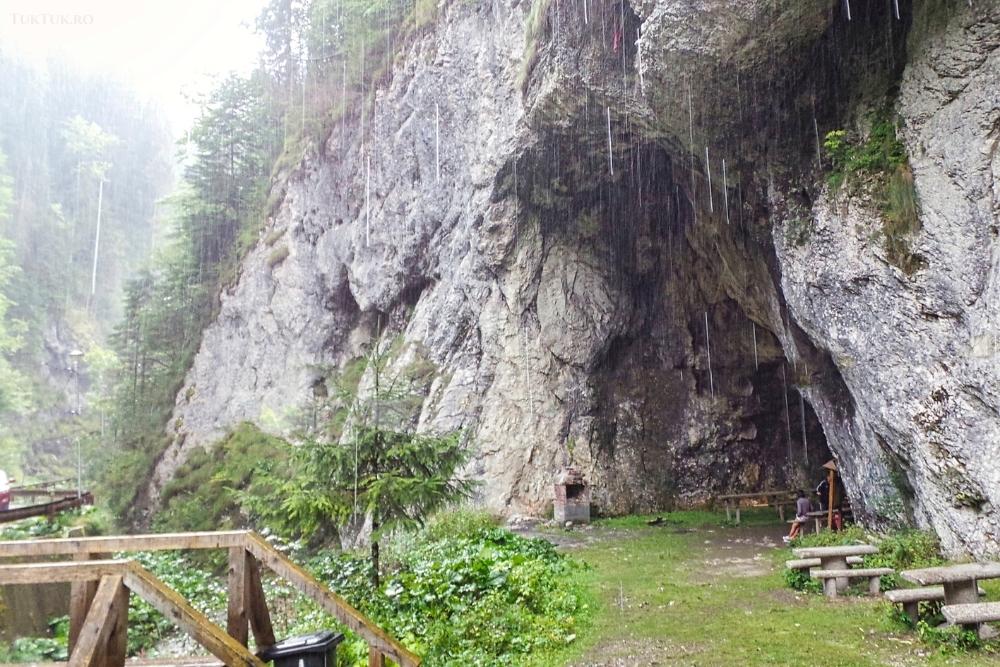
Visiting Ionele’s Gate Cave (Poarta lui Ionele) can be done together with a visit to Scarisoara Cave. The two caves are located at a short distance from each other, in the Ordancusii Gorge. Ionele welcomes you with a huge and spectacular cave (Corobana lui Gartau), which is, however, flooded, but where you can have a picnic because there are some small tables. The entrance to the cave is on a side road, after walking 150 metres.
Discovered by J. Vass in 1857 but explored by the famous Romanian explorer Emil Racovita in 1921, the cave has a nice legend, from which it gets its name. Ionele was an outlaw hiding in this cave and uncovered when a girl from the village came to bring him food. The entrance to the cave is made through a 20-meter high opening. The path is laid out, and the interior is illuminated. The length of the cave is 131 meters; the stalactites and stalagmites are rare but, as an element of interest, there are several (protected) bats colonies in the galleries. On the gallery walls, you can see the traces left by the water that floods it during rainy periods.
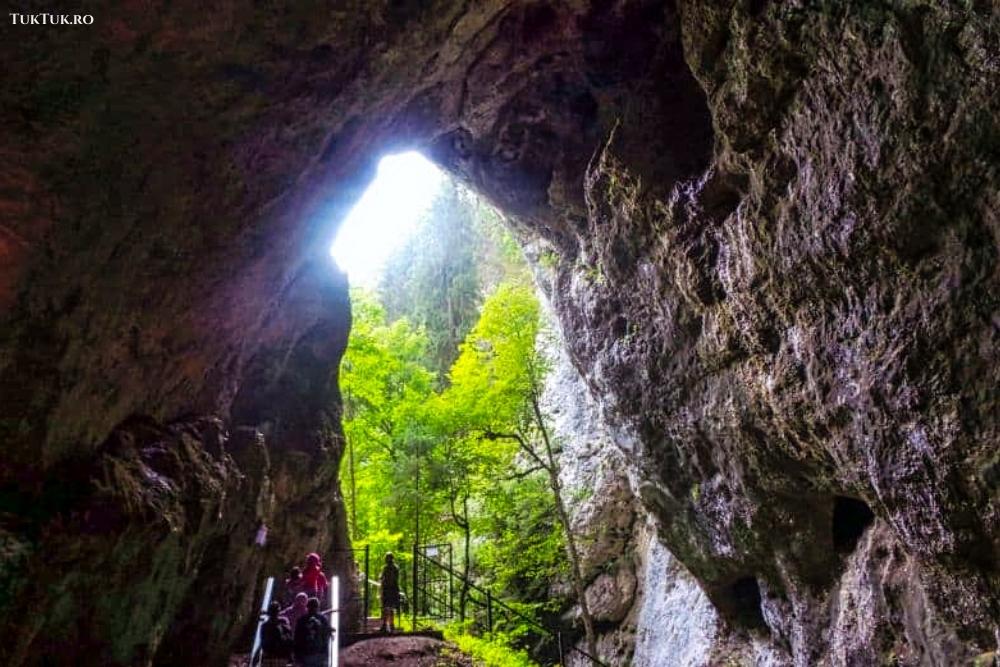
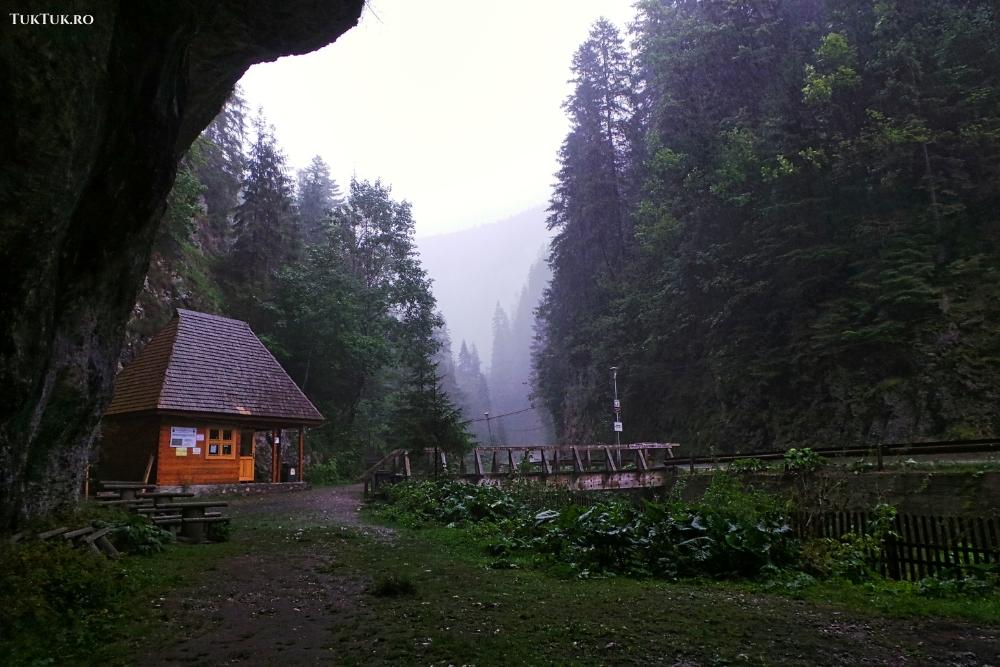
The entrance fee is 12 lei/adult, 7 lei/child.
How to get to Poarta lui Ionele cave: from DN75, in Gârda de Sus, follow the sign to Scarisoara. After about 3 km, turn right at the first fork. Ionele is 1.5 km away, on the left side of the road.
5. Scarisoara Cave (or Scarisoara Glacier Cave)
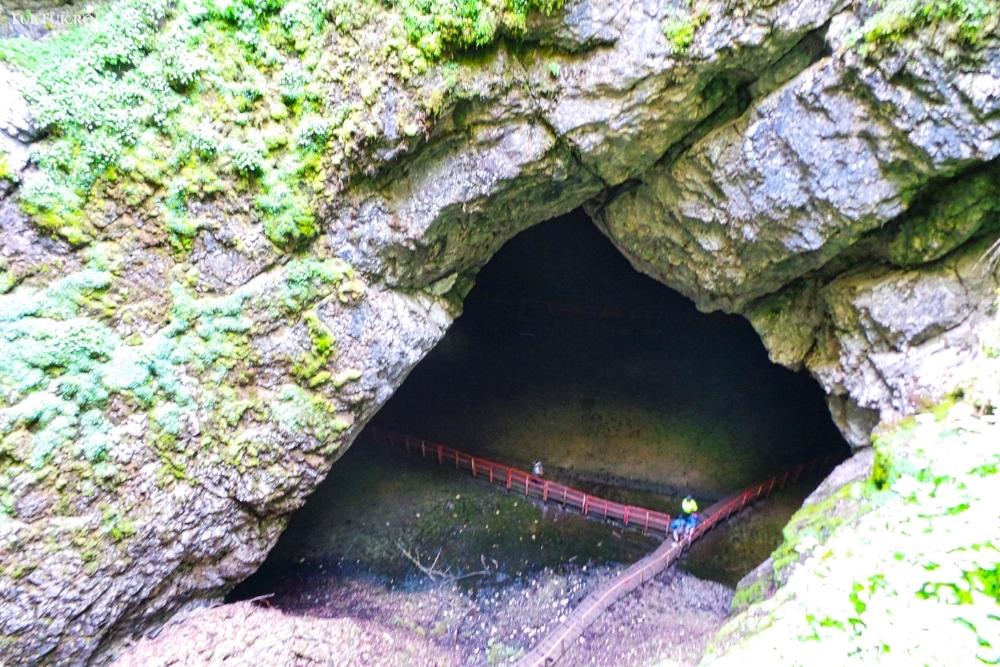
Suppose you chose to visit Ionele’s Gate first. In that case, you will walk towards Scarisoara crossing a beautiful area – the Ordancusii Gorge and the portion after it – with fabulous bucolic landscapes that will make you stop the car for a special photoshoot. At some point, you will stop in the parking lot from where the signs will send you, on a 10-15 minutes walk, to Scarisoara Cave, the largest ice cave in Romania, declared a monument of nature in 1938. You will have to be prepared not so much to go down the 270 steps (48 meters) but, especially, to climb them on the way back.
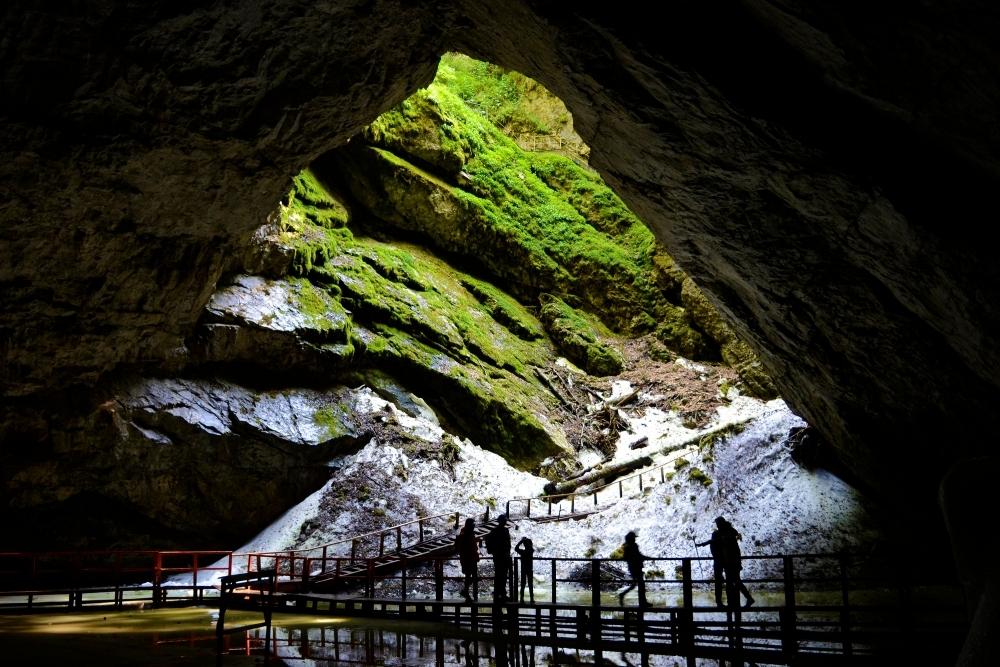
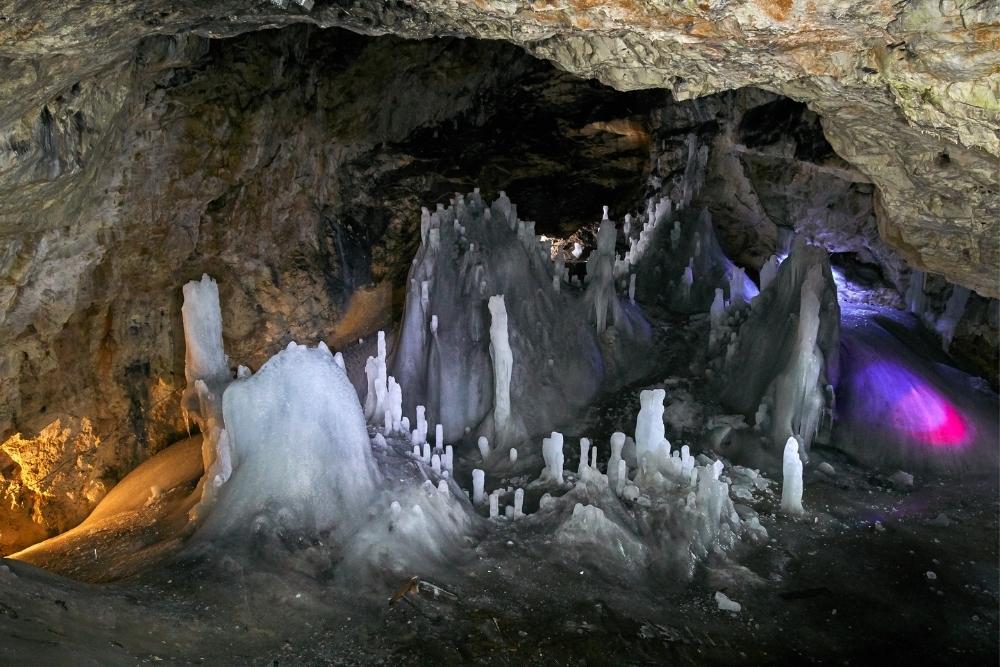
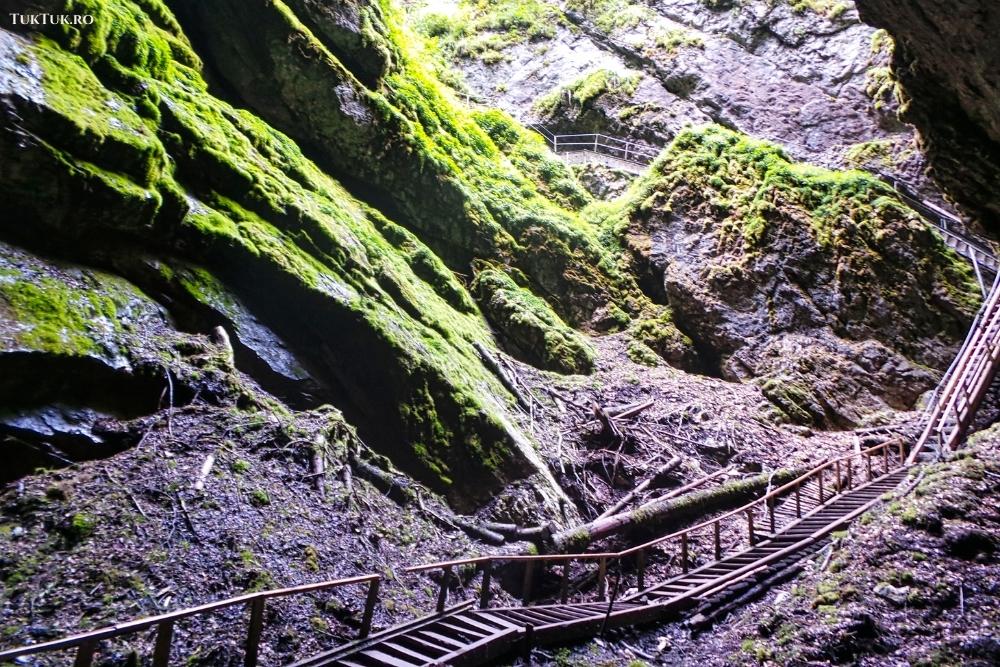
Located at an altitude of 1150 m, Scarisoara was mentioned for the first time in 1863 by an Austrian geographer. The glacier inside the cave is more than 3000 years old. The cave has a total length of 750 meters, 250 of which can be visited. You can visit the main gallery – the Great Hall at the entrance, then the Church, where several dozen stalagmites exist. There are two other rooms – the Small Reserve and the Large Reserve, which are not open to tourists but only for scientific researchers. The glacier in the cave is holding out because of the air currents and the low temperature inside. Throughout the year, the ice melts and then melts again, so the cave landscape is never the same.
How to get to Scarisoara: from the DN75, follow the signpost in the middle of Gârda de Sus. The cave is about 18 km away. There is a program of guided visits at fixed hours. The entrance fee is 13 lei/adult, 8 lei/child.
4. Museum of Ethnography “Horia and Aurel Flutur”
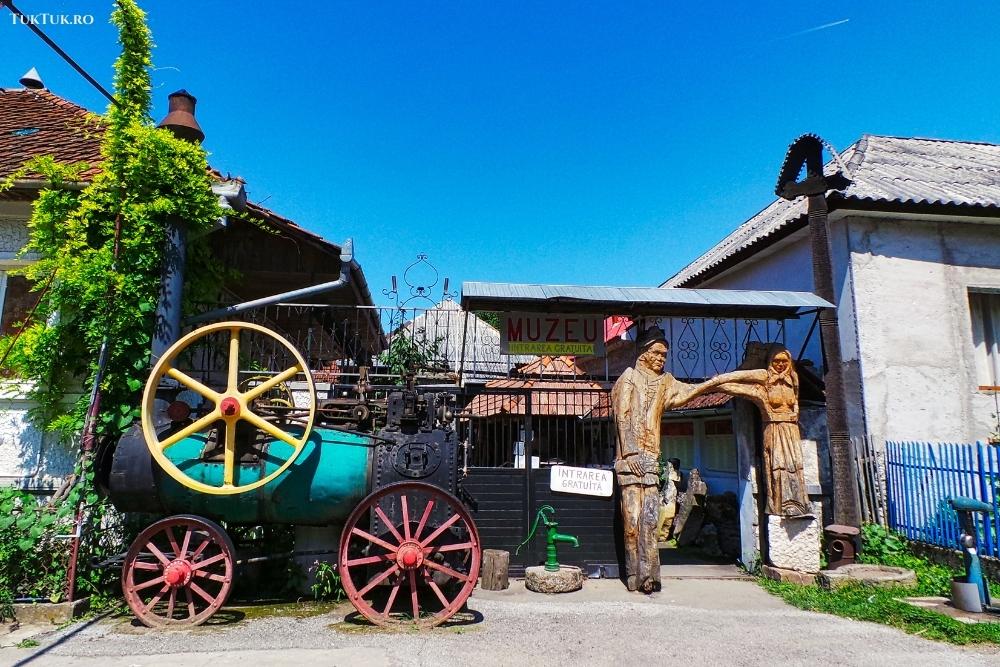
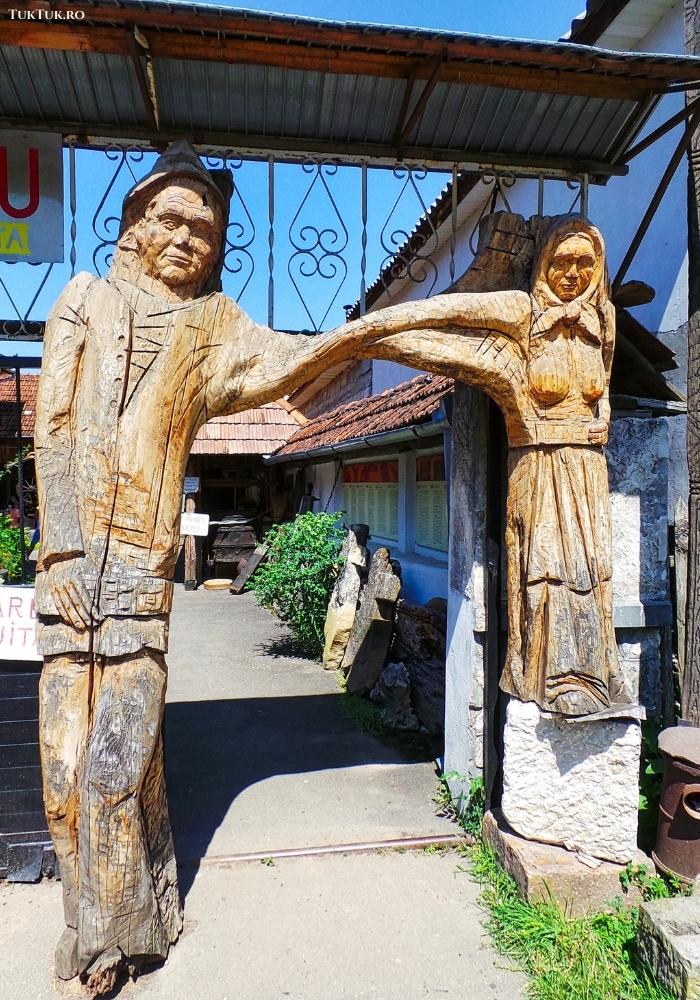
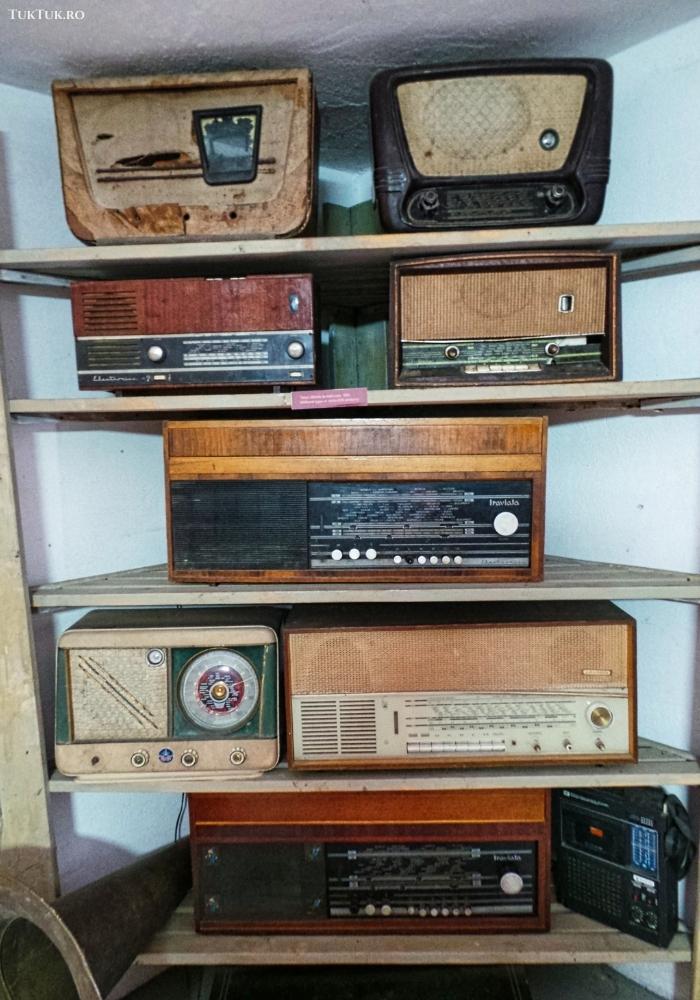
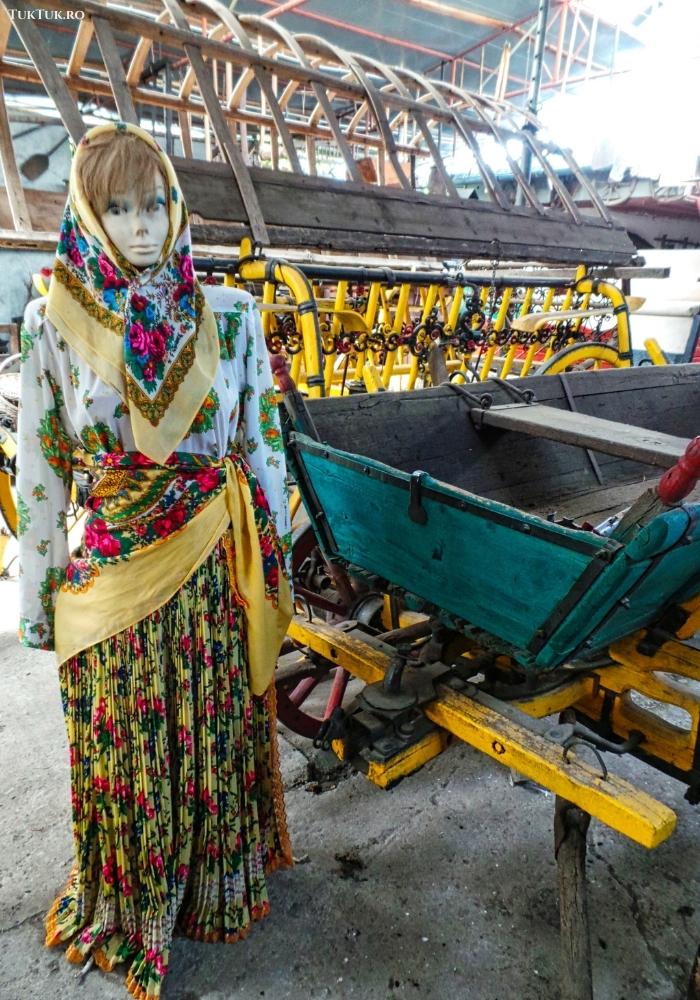
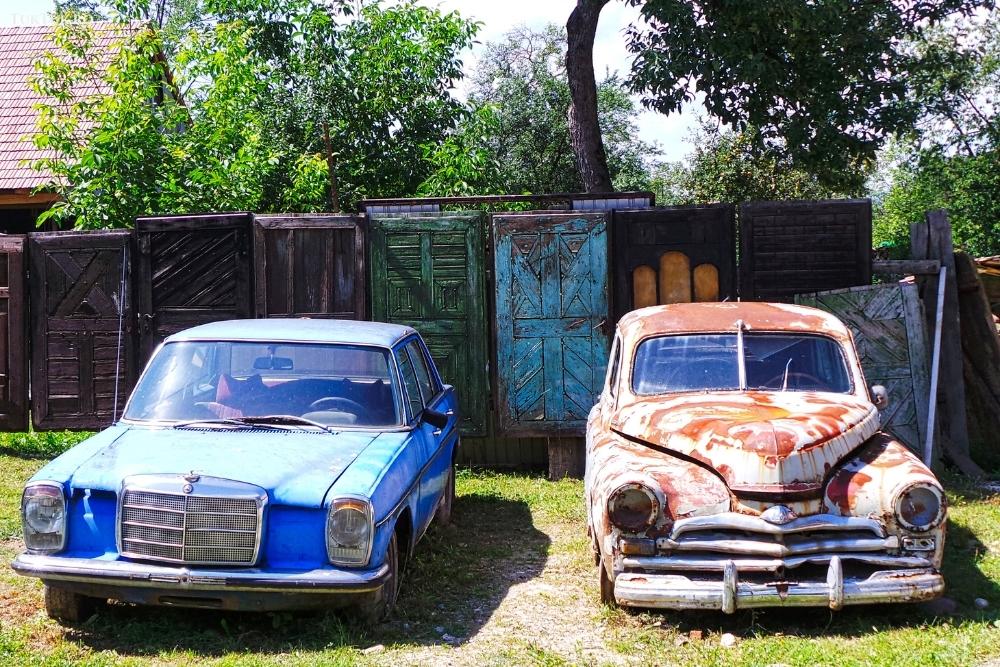
On your way to the Bears’ Cave, stop at this private museum, which will amaze you from all points of view! It was inaugurated in 2005 by Aurel Flutur, a former taxi driver but, above all, a passionate collector of everything that means old Romanian folk art objects. Aurel Flutur, together with his wife and, then, with his son Horia, collected for 40 years more than 2500 objects that he exhibited in the courtyard of his house in Chiscau. Folk clothes, traditional pottery, an old shoemaking workshop, all kinds of installations, cars, a spectacular locomotive (made in 1907, in Hungary, and used in the movie Padureanca), a fireman’s wagon, an interesting German bicycle, typewriters, telephones… plus many more, an incredible universe, sometimes chaotic but indeed highly fascinating.
How to get to the Horia and Aurel Flutur Museum: the museum is located in Chiscau commune, Pietroasa village, a few hundred meters before the entrance to the Bears’ Cave. There is no entrance fee, but it would be advisable to leave a donation, possibly to buy a souvenir or at least a flyer about the museum (2 lei).
3. The Bears’ Cave
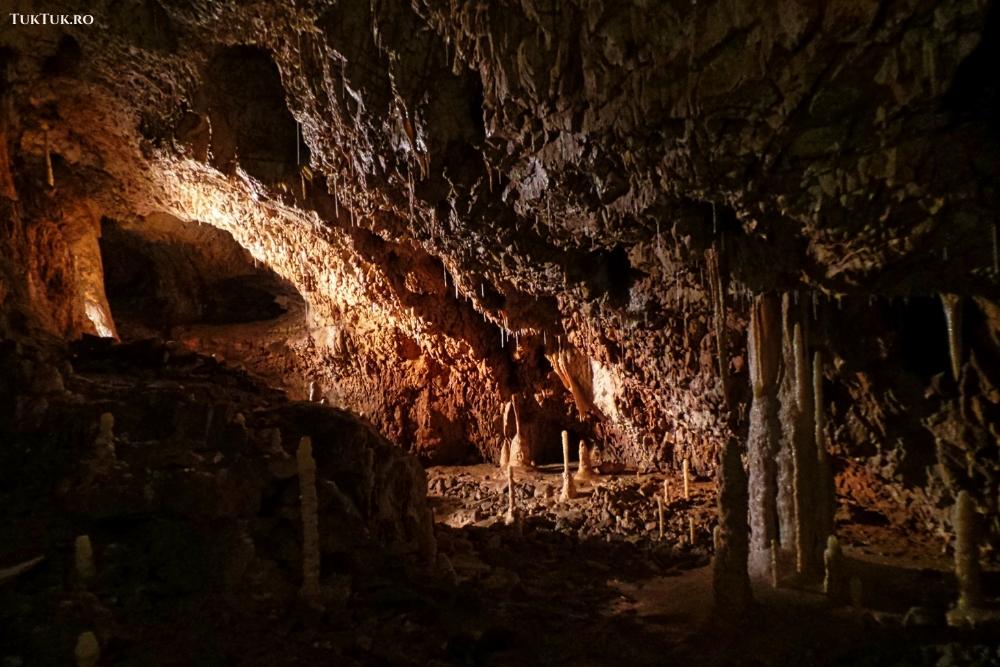
The Bears’ Cave is the most well-equipped tourist place I visited in the Apuseni. No wonder, since the famous Micula brothers privately manage it. I don’t discuss how they handle it (they don’t own the cave, the law forbids this, but the building at the entrance), how they “won” this contract, and how much they would have had to invest in bringing it up to international standards. Beyond these things, compared to the other caves visited, it’s by far the best laid out in terms of layout.
More than 17,000 years ago, this place was home to local animals, especially bears (the species ursus spelaeus – the cave bear, now extinct). A rock collapsed at one point over the cave’s entrance, following an earthquake, and trapping about 140 bears inside, which met their tragical end. This is how the name of this tourist attraction was given.
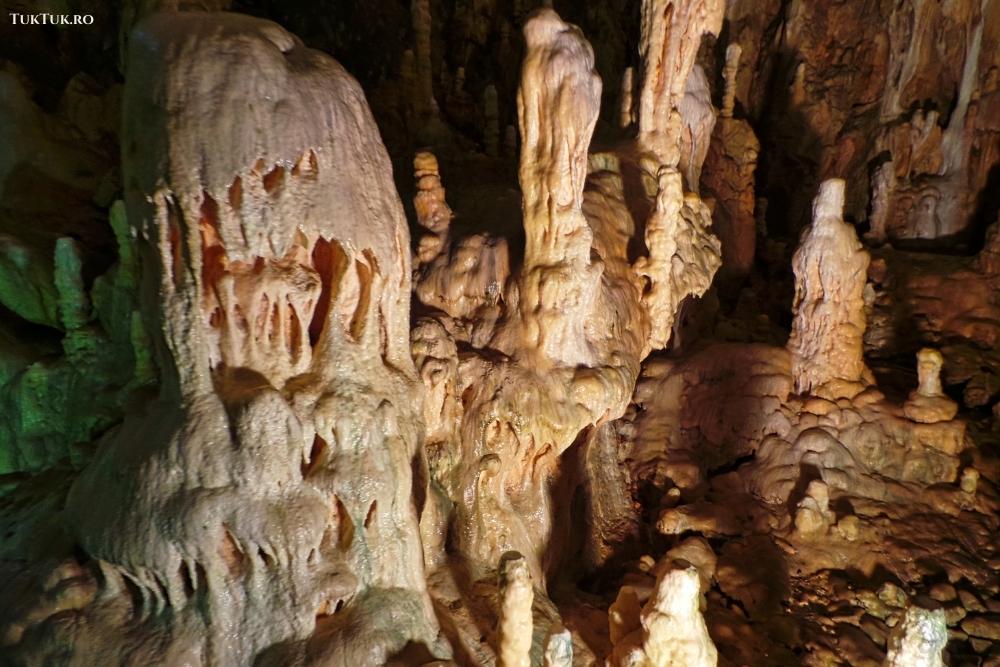
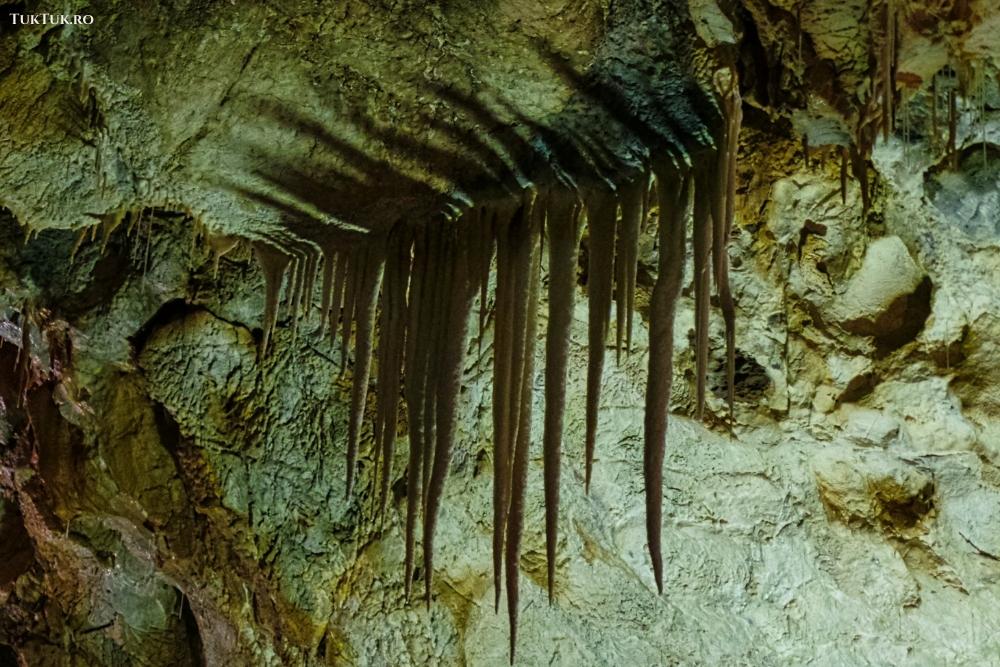
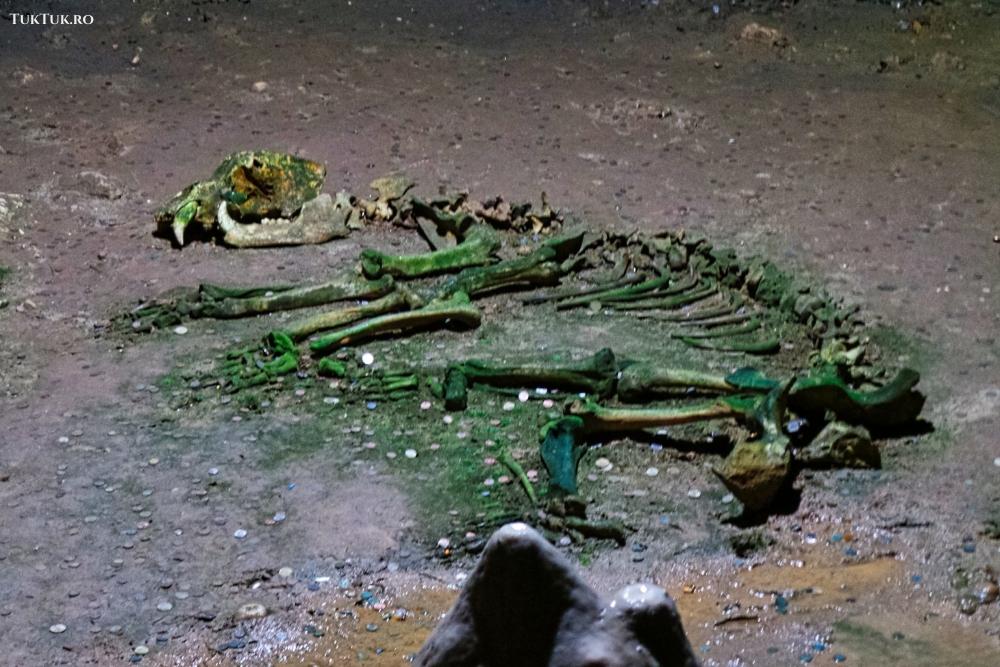
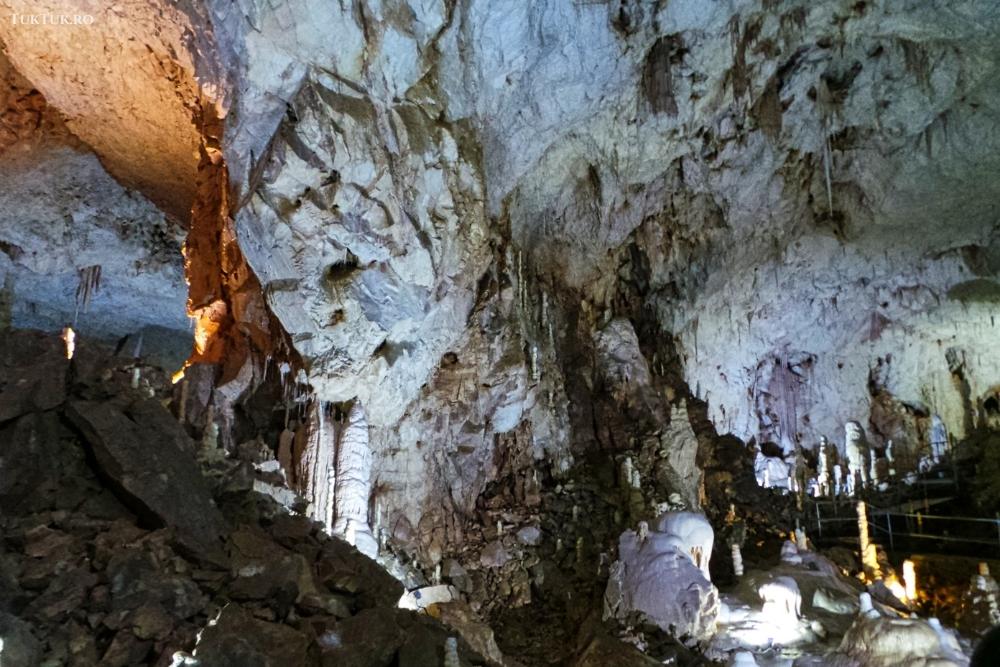
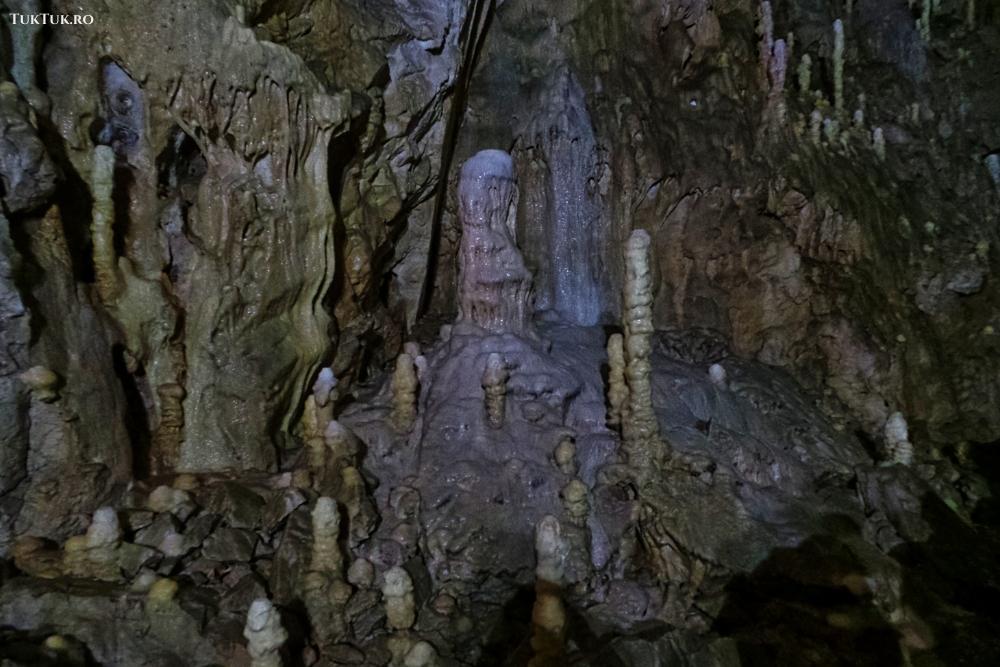
The cave was very late discovered, in 1975, by a group of miners working in the Chiscau limestone quarry. Five years later, the cave became part of the touristic circuit. It is 1.5 km long and has three galleries for visitors, plus one for scientific research — the Hall of the Candles, the Emil Racovita Hall, and the Birds Hall. In the Emil Racovita Hall, there is a bear skeleton on display, but what contributes to the cave’s beauty are the thousands of stalactites and stalagmites that fill the cave in the most diverse shapes and sizes.
There is a strange limestone formation in the shape of a bear desperately trying to find its way out of the cave after having its head trapped in the Candles gallery. Many of the formations have bizarre shapes and are named according to people’s imagination: Rocket, Swan, Dwarf House, Pagoda, etc.
If the Bears’ Cave is very beautiful inside, I can’t say the same about the outside. The rubbish is thrown on the side of the road, and the dilapidated stalls of the sellers of (kitschy) souvenirs, syrups, and alcoholic beverages give a bleak picture on the way to the building through which you enter the cave.
Entrance to the Bear Cave costs 15 lei/adult and 10 lei/child, and the visiting schedule is from Tuesday to Sunday, between 9 am and 5 pm, at fixed times, with a guide (lasts 45 min). The aberration comes from the photo and video fee (15 lei) charged for those who want to propagate the natural beauty of the country they live in. The temperature in the cave is about 8-10 degrees so dress accordingly.
How to get to Bears’ Cave: from DN76 (Oradea – Deva), then on DJ763 (in Sudrigiu) towards Chiscau – 14 km.
2. Ruginoasa Pit
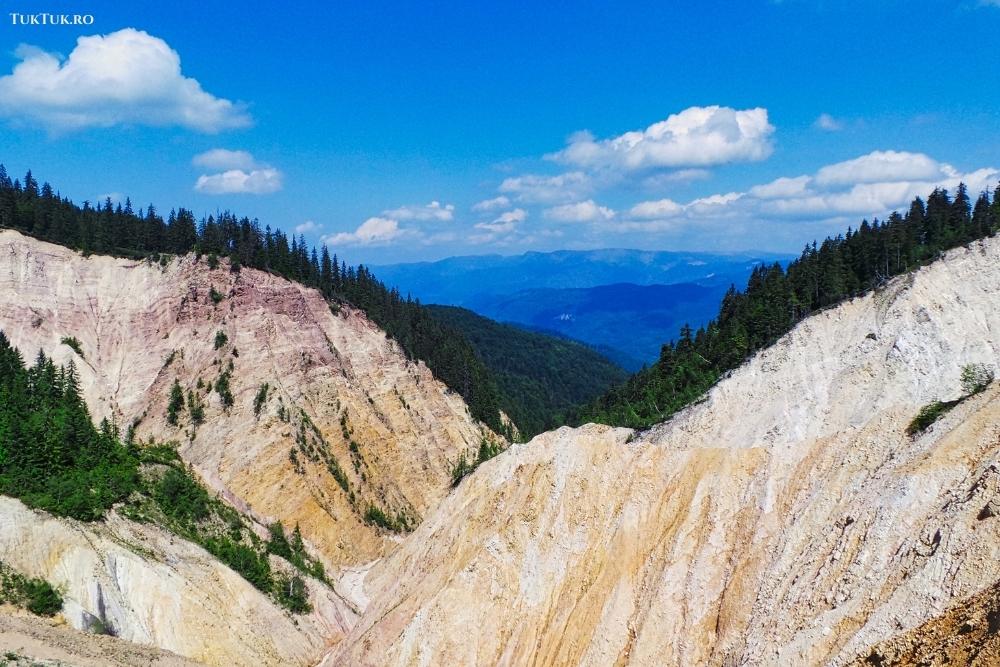
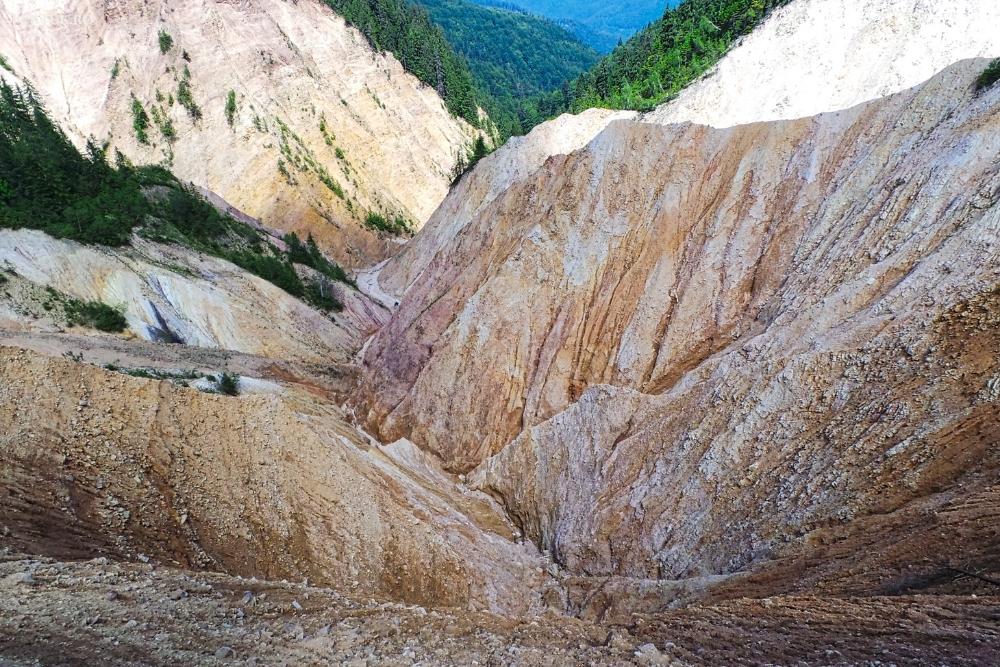
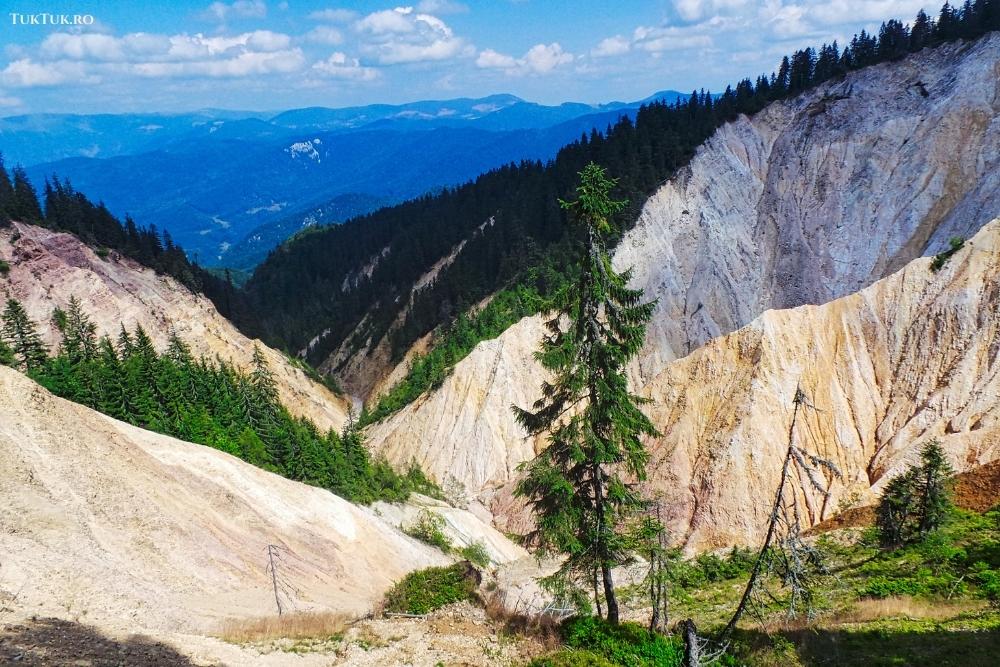
As a result of the solid torrential erosion of the water on the soil made of red and yellow sandstones, the spectacular pit Ruginoasa, 100 meters deep, with a diameter of about 600 meters, was born. It’s worth climbing the 900m or so to see this colossal canyon that is still widening – a unique landscape and a fascinating geological nature reserve.
How to get to the Ruginoasa Cave: from the DN75, in front of Vartop, follow the sign to Ruginoasa. It is a route that takes about an hour and involves a sustained climb through the boulders at least in its first part (15-20 minutes).
1. Meziad Cave in Apuseni Mountains
Meziad was for a long time considered the longest cave in Romania, with its 4750 m (until they discovered that the Wind’s Cave is 47 km long!). It was one of the first arranged Romanian caves, and it’s been declared a monument of nature and a speleological reserve.
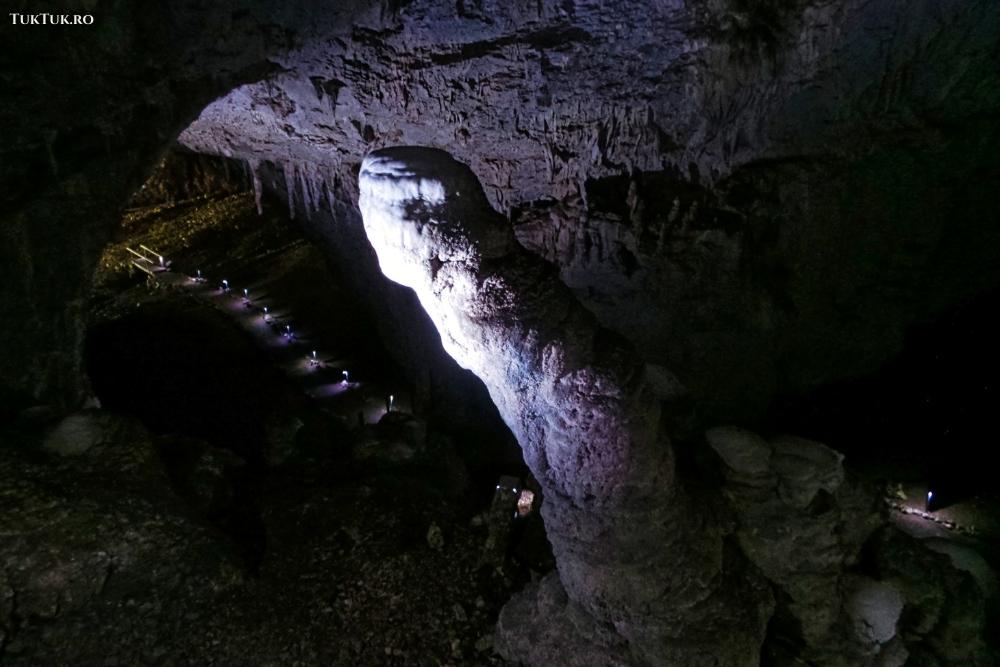
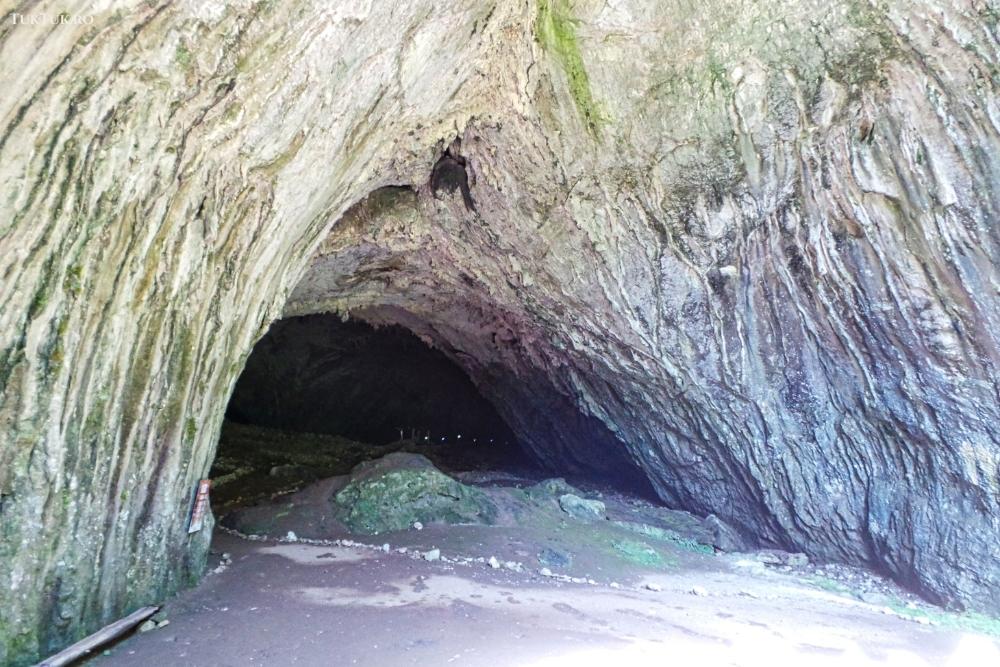
It is located at an altitude of 297 m, and the entrance is made through a 16 m high portal. The cave is very spectacular – the corridors, galleries, limestone formations, draperies, stalagmites, and stalactites will delight your traveler spirit. Another element meant to capture your attention is the bats colonies in the Bat Room.
Meziad Cave is visited according to a fixed schedule, with guided entry every hour, starting at 10 am and ending at 5 pm (1 June – 30 September) / 4 pm (1 March – 31 May). The cave can be visited during the rest of the period by appointment only. The tour lasts about 45 minutes, and the temperature in the cave is about 10-12 degrees. The entrance ticket costs 15 lei/adult and 10 lei/child (children under five enter for free).
Organized groups benefit from discounts. There is no tourist photo fee. At the cave entrance, there is a nice zip line (10 lei per tour). http://www.pestera-meziad.ro
How to get to the Meziad cave: on the DN76, from Beius, follow the county road Rosia- Alesd to Remetea commune (9 km) from where you drive another 9 km on an asphalted road on the Meziad Valley to the village of the same name. From Meziad, walk about 1 km to the cave.
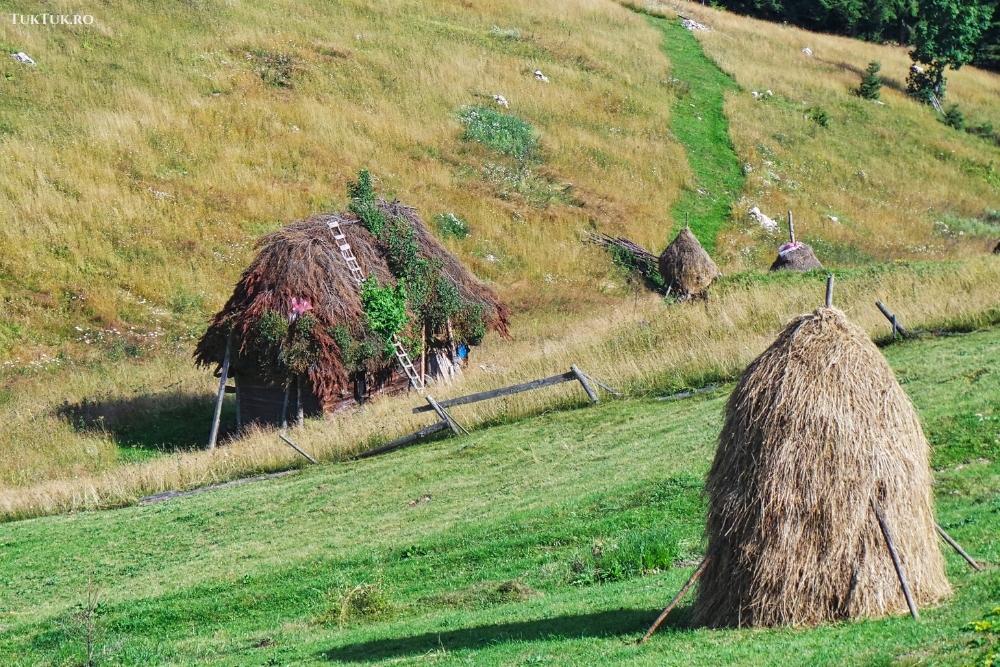
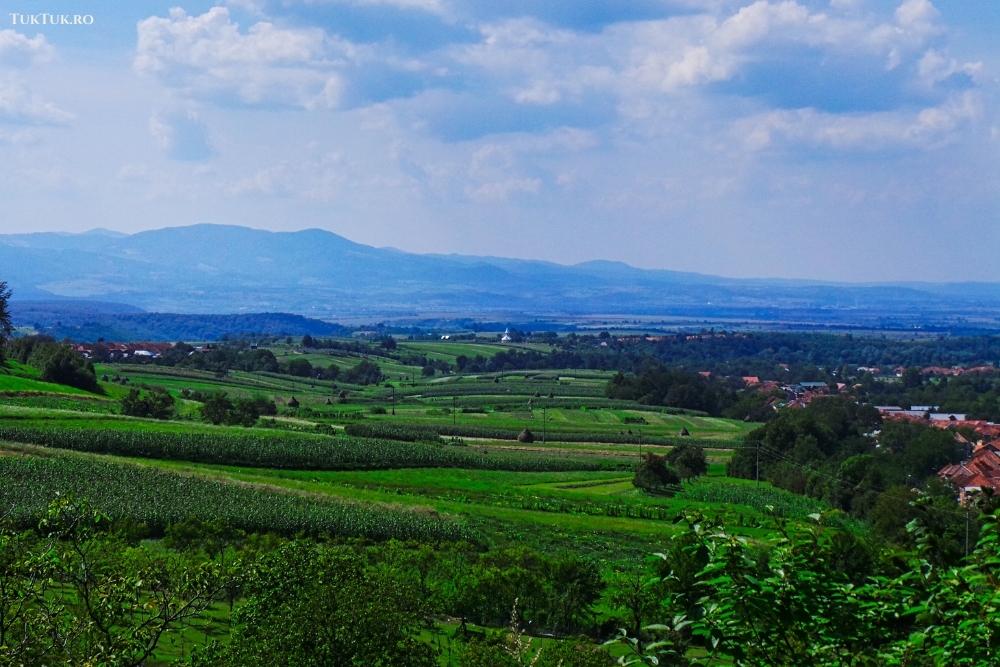
You may also like: Maramures – 10 things to see and do in the beautiful Northern Romanian region
Pin it!
